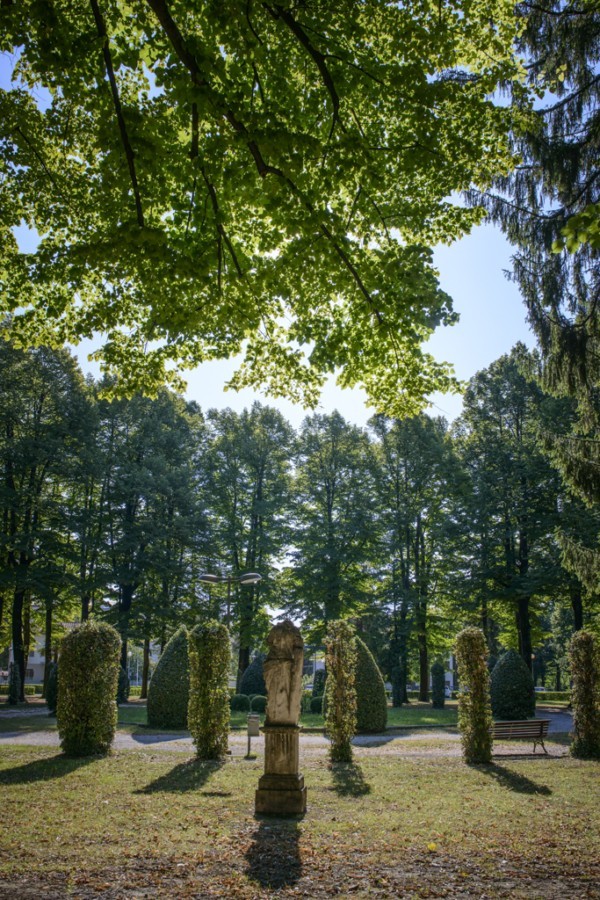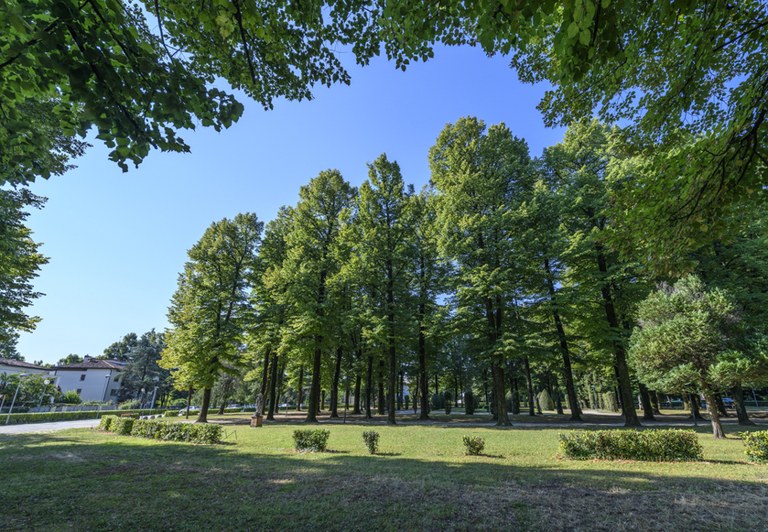LOCATION



The IV Novembre Park is still called 'Public Garden' by many people living in Pordenone, as it was built around 1856 by the Civic Administration, taking advantage of the space created between the centre and the Cappuccini district after the construction of the railway. In 1903, the garden hosted an important agricultural exhibition and then regularly hosted the animal market, which was moved there from Piazza della Motta, where it had been held every Wednesday since 1594.
It is probable, therefore, that the design of the park took into account its main use as a boarium, both because of the numerous radially arranged entrances and because of the concentric planting of the trees, designed to allow animals to be tied in, also ensuring that they could rest in the shade during the summer heat.

La serie circolare in origine era costituita da ippocastani (piante dall’alto potere ombreggiante) tagliati nel corso della Grande Guerra e poi rimpiazzati con tigli, certamente già presenti nell’area più centrale del parco. In epoche successive furono inseriti diversi sempreverdi, come ad esempio l’abete rosso, il cipresso, il tasso e la tuia.
Lo schema circolare del giardino oggi è risaltato da alcuni esemplari di alloro, potati con elegante geometria conica oppure cilindrica.
Il parco conserva, inoltre, alcune statue e capitelli in pietra.
Il Parco IV Novembre svolge un’importante funzione di connessione ecologica tra il Parco Querini, l’area alberata di piazzale Marcolin e le sponde verdi del Noncello, garantendo continuità alla cintura verde che abbraccia la città di Pordenone, estendendosi dal lato opposto sino al Parco Galvani per proseguire poi, quasi senza soluzione di continuità, verso il Parco del Castello di Torre, per mezzo del Parco del Seminario.
© OpenStreetMap contributors – ZOOM
*The photographs belong to the Municipality of Pordenone and are distributed with Creative Commons Attribution License 4.0 International (CC-BY)

